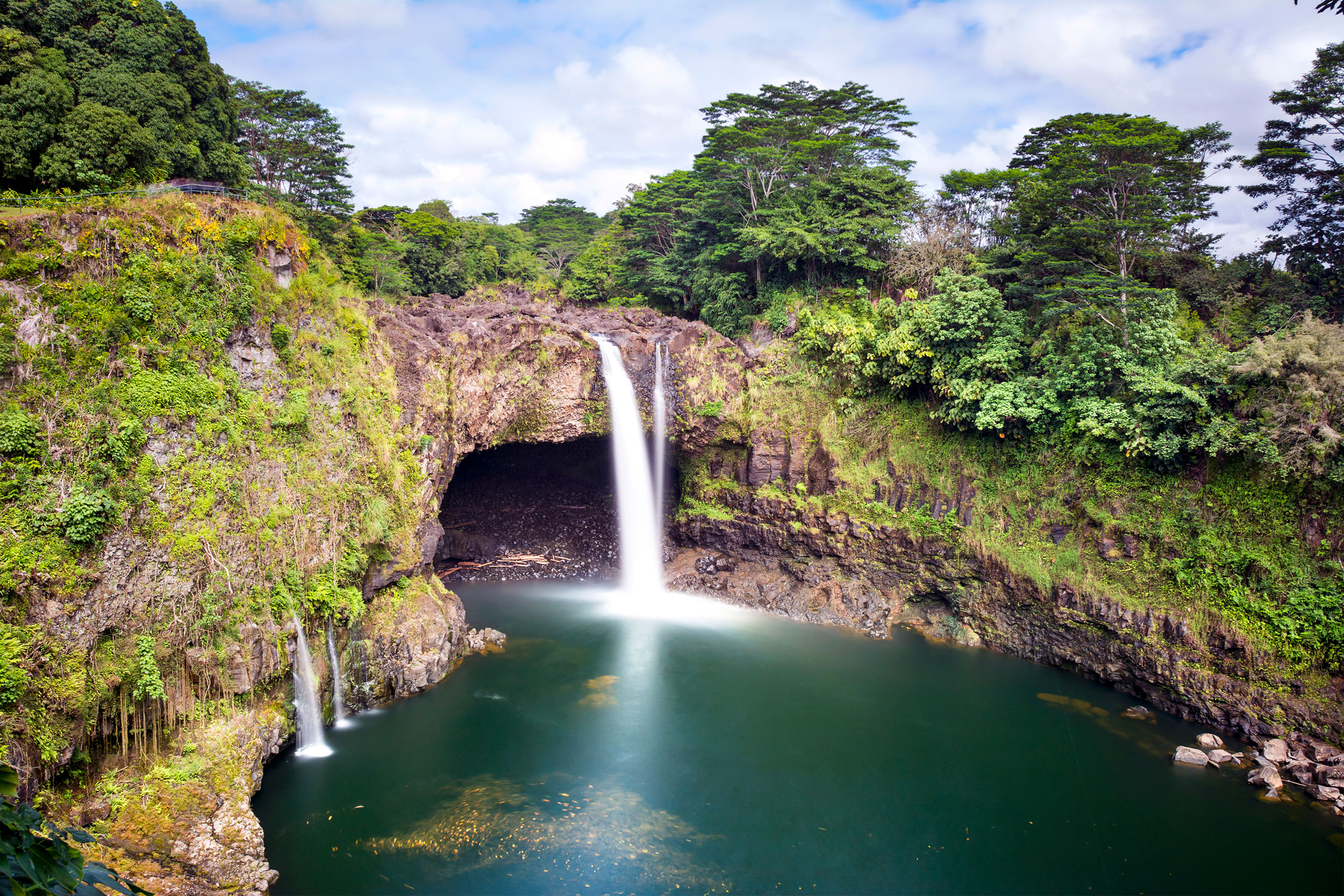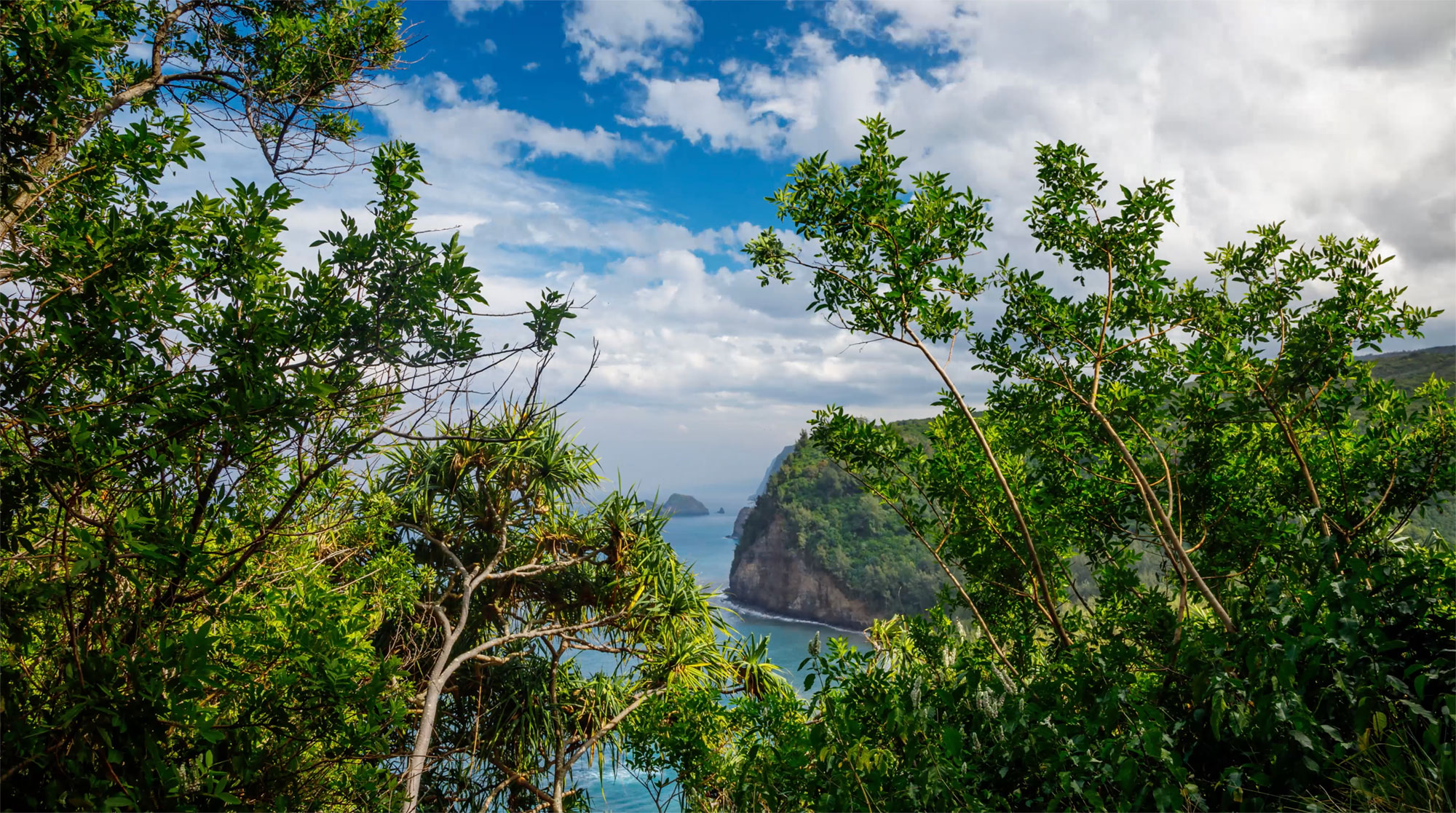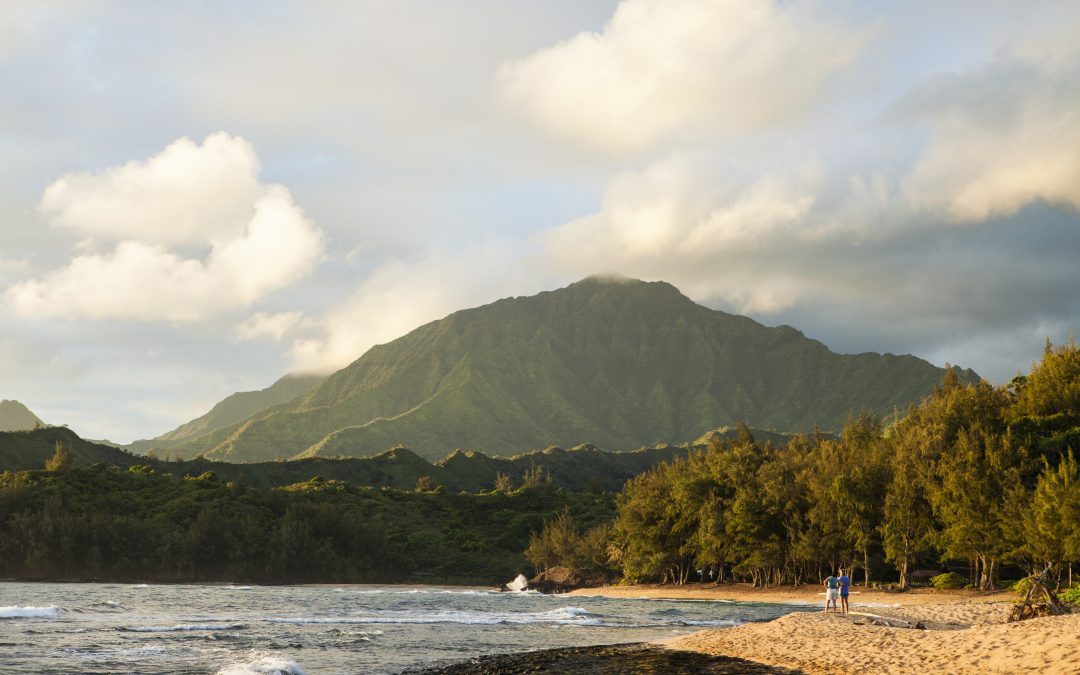What is Topography?
Topography refers to the arrangement and features of the Earth’s surface, including natural and artificial elements; natural elements being mountains, valleys, plains, and roads being the artificial elements. Understanding the diverse topography of Hawai‘i helps visitors plan their trip accordingly and make the most out of their time on any island of Hawai‘i. The diverse topography shaping the climate, natural sights of each island, and the way people have lived on these islands for centuries.
The Hawaiian Islands’ topography is characterized by volcanic landscapes, ranging from snow-capped mountains and lush rainforests to dry deserts and dramatic sea cliffs, with the islands themselves formed by volcanic activity. The level of rainfall also contributes to the climate of each island. Meaning, islands that experience higher amounts of rainfall have a slightly cooler and more humid climate. The Hawaiian Islands are tropical but experience many different climates, depending on altitude and surroundings. While all islands have a similar tropical climate, each of them is home to different natural wonders. Needless to say, an island-to-island guide of Hawai‘i’s diverse topography comes in handy for first timers as well as Hawai‘i aficionados.
Hawai‘i’s Island-to Island Topography Guide
Kaua’i
Located most northern of the Hawaiian archipelago, Kaua’i has tropical rainforest covering much of the island’s surface which gives this island a cooler and more humid climate than its neighbor islands. Kaua’i is the home to the Wailua Falls, the 10 mile long Waimea Canyon and the Nounou Trails. Besides that, the island is also known for its golden sand beaches including the Poʻipū Beach, Hanalei Bay, and Kalapakī Beach. Tranquil beaches and serene water falls are not the thing that define the beauty of Kaua’i’s topography. It is the iconic jagged seacliffs with secluded beaches and pristine rivers of the Nā Pali Coast & Hanalei Valley that makes Kaua’i special.
It is crucial for visitors to know their route options when getting around Kaua’i, unlike Oʻahu which is home to Hawai’i’s capital and provides the convenience of city life, Kaua’i offers a more relaxing lowkey vibe. There are two main roadways on this island, the Kūhiō Highway (Route 56) and Kaumualiʻi Highway (Route 50) – and the island is 25 miles long and 33 miles wide. Although there is a bus system, ride share services presence, and some hotels run shuttle services, these options for transportation are not reliable. The best way to truly explore Kaua’i is to rent a car and drive.
O‘ahu
Also known as the Gathering Place, Oʻahu is the home to the majority Hawaiʻi’s population and the hub of financial district, tourism, and education. Home to Honolulu, Hawaiʻi’s capital, Oʻahu, the island is no doubt a perfect blend of natural elements and constructed elements. Oʻahu was formed by extinct volcanoes with a central plateau between them. The island is characterized by the two major mountain ranges, the Waiʻanae and the Koʻolau that were once shielding the extinct volcanoes that shaped the island geography. If Kaua’i is famous for its iconic jagged seacliffs and pristine rivers, then Oʻahu is known for dramatic ridges and lush valleys of Koʻolau and Waiʻanae Mountains. The famous Waikīkī Beach is another natural wonder that makes Oʻahu the vibrant island that it is. Visitors to Oʻahu can explore a mix of nature and history as Oʻahu has many natural parks for hiking as well as cultural sites along with museums and events for showcasing and preserving Hawaiian traditions.
Oʻahu offers different ways of transportation including public transportation, ride share services, scooter and car rental services. TheBus, Honolulu’s bus system, is an award winning bus service with extensive routes from Honolulu to other cities in Oʻahu. Scooter rental services can be found easily in Honolulu with a wide range of prices offered by different services and flexible renting hours. Ride share services are recommendable when traveling to and from within the city area, but be aware that in some areas it will be difficult to find a ride back. Ultimately, renting a car is the best way to guarantee your trip in Oʻahu goes as planned. 
Molokaʻi and Lāna‘i
Similar to other islands of Hawaiʻi, Molokaʻi and Lānaʻi were formed by volcanic activity. The East and West Molokaʻi volcano formed Molokaʻi. The dramatic seacliffs that Molokaʻi is famous for is a significant portion of the East Molokaʻi volcano collapsed into the ocean. Molokaʻi is home to the world’s tallest seacliff, particularly along the north shore, east of Kalaupapa Peninsula. The West Molokaʻi volcano, the smaller volcano created the Kalaupapa Peninsula which is now a National Historical Park. On the west side of Molokaʻi, visitors will find numerous golden sand beaches. Take a hike at the Maunahui-Makakupaʻia Trail Head where visitors can immerse their minds into the diverse beauty of Molokaʻi’s nature. Nearby the Trail Head is the Molokaʻi Museum & Cultural Center where everyone can learn more about the history and traditions of this island.
South of Molokaʻi is Lāna‘i, this island also known by its lovely nickname, the Pineapple Island. Lāna‘i was formed by a volcano known as the Palawai Volcano or Lāna‘i Volcano. Lāna‘i is the only island in Hawai’i that does not have active volcanic activity at present time. The rugged terrain, red dirt landscapes and unique rock formations such as the famous Keahiakawelo (Garden of Gods) on Lāna‘i is the result of erosion and geological changes over time. Similar to Molokaʻi, Lāna‘i’s beaches are famous for their golden sand, crystal clear water, and seclusion. A special attraction in Lāna‘i is the Lāna‘i Cat Sanctuary which has become a safe haven for over 600 rescued cats and a place to visit for cat lovers.
A ferry is available from Maui to Lānaʻi, both Molokaʻi and Lāna‘i can be traveled via flights from Oʻahu, Maui, or the Island of Hawai’i. Planning ahead to get a rental car is highly recommended when traveling within Molokaʻi and Lāna‘i as there is no public transportation and limited taxi services.
Maui
The Maui island was formed from the flow of lava over millions of years. Its geography is characterized by two dormant volcanic features, Haleakalā in the east and the West Maui Mountains. These two mountains are connected by a narrow isthmus, creating a valley isle landscape with diverse terrain ranging from lush rainforests and fertile plains to desert moon-like mountaintops. The road in Maui is built according to its landscape with main highways going along the coast on both the eastern and western side of Maui; on the eastern side, there are roads that go across the island. Maui is home to the famous “Ohe’o Gulch also known as the Seven Sacred Pools, the breathtaking series of cascading waterfalls and pools within Haleakalā National Park. Other unique sights on Maui include a prominent red sand beach, the Kaihalulu Beach, Hāna Rainforest, and stunning sunrises above the clouds from the summit of the Haleakalā dormant volcano.
The best way to get around on Maui that will guarantee visitors the most freedom as well as reliability is to rent a car; most car rental companies are located at the airport and in downtown Wailuku. Maui Bus is the only public transportation available, operates with 14 routes, running every hour from about 7AM to 8PM. Ride share services are available as well, but only suitable for shorter trips and in the more populated areas.
Big Island of Hawaiʻi
Located southernmost of all Hawaiʻi’s islands, the Big Island of Hawaiʻi has five volcanoes that shaped its formation: Kīlauea, Mauna Loa, Mauna Kea, Hualālai, and Kohala. Two of the five, Mauna Kea and Mauna Loa, are among the world’s largest volcanoes; furthermore, the Mauna Kea is the world’s tallest mountain from base to summit, beating Everest in height. The volcanoes on this island contribute to the rare green sand color of Papakōlea Green Sand Beach. Beyond its volcanoes, the Big Island of Hawaiʻi is home to stunning natural wonders such as Akaka Falls and Rainbow Falls, Hāmākua Coast and Waipiʻo Valley where Verdant cliffs, waterfalls, and taro fields can be found.
Once again, the best choice for transportation is renting a car. Visitors be aware that driving here will be on the right side. The Hele-in Bus will get you to most places on the island, but transit times are long and connections are infrequent. Taxis on the Big Island are present (mostly in and around Kona) but not cheap so it’s worth exploring alternatives if you can.

FAQ
What makes Hawaiʻi’s topography so diverse?
Volcanic activity over time formed the diverse topography of Hawaiʻi’s islands. Hawaiʻi’s beaches with different sand colors are determined by the type of volcanic rock and minerals that erode and form the beaches. Along with volcanic activity, plateau shifting created a dramatic range of landscapes such as towering sea cliffs, valleys, lush rainforests and deserts.
What is the best way to explore any island of Hawaiʻi?
The best way to explore any island of Hawai’i is to rent a car. This option of transportation gives visitors the most freedom to choose when and where they want to go. The only island that boasts effective public transport services is Oʻahu as there are bus, skyline, and handicapped public services in Honolulu.
Which Hawaiian island has the most diverse landscape?
While each island of Hawaiʻi has unique geological features shaped by erosion, lava flows, and climate variations, the Big Island of Hawaiʻi takes the title of having the most diverse landscape. The Big Island of Hawaiʻi features four out of five climate zones, from snow-capped peaks of the Mauna Kea to active lava fields of the Kīlauea as well as lush valleys, and arid plains.
